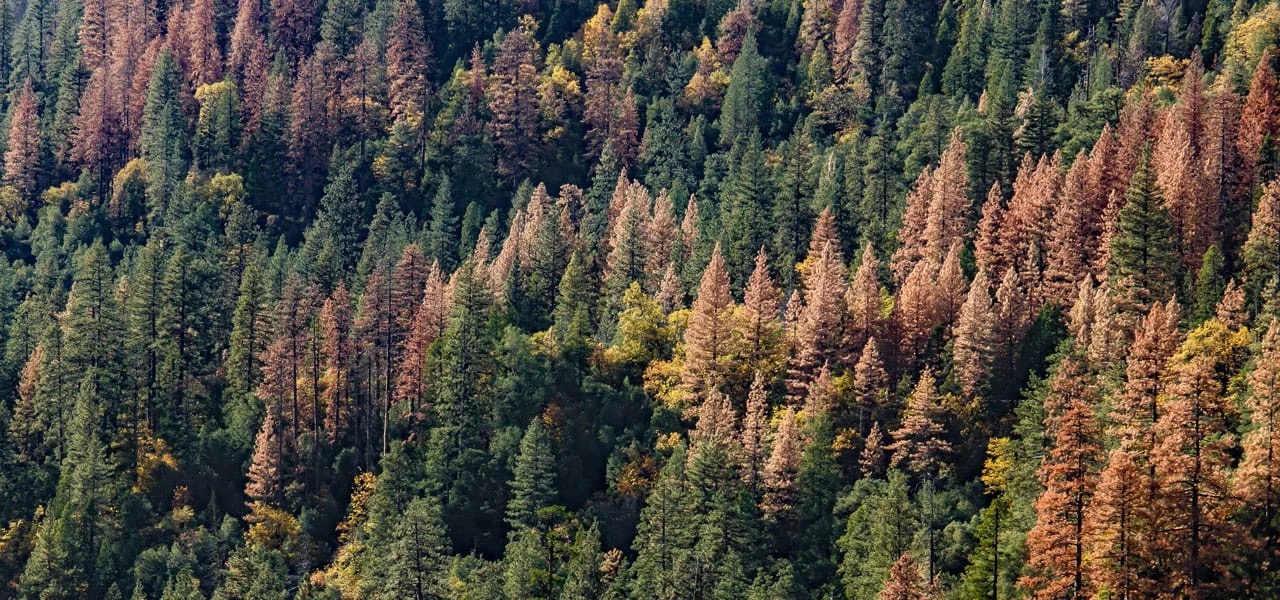The busiest season for us is undoubtedly summer and fall, but if you didn’t have a chance to get some of your tree work done, you don’t need to stress. Many kinds of tree pruning and removal can be done during the winter months here in Colorado – and in some cases, it’s better for the trees and your yard. The Colorado State Forest Service even recommends it!
While we do extra things during the winter such as hanging and removing holiday lights, we still continue tree maintenance work, including removals.
Winter Provides a Better View
During the colder winter months, many trees and shrubs become dormant. Deciduous trees have lost their leaves and are waiting for spring to produce new growth. Without this leafy cover, it is often easier for an arborist to assess your trees and to look for any dead or disease-ridden branches. The overall structure and health of the tree are easier to assess, and if branches do need to be pruned, it’s easier to reach them.
Cold Temperatures Prevent the Spread of Pests and Diseases
Trees are not the only living things that go dormant in the winter. Pests and diseases either go dormant or can’t survive in the cold, so if a tree is pruned, the cut isn’t immediately besieged by pests (like mountain pine beetles) or diseases (like fire blight or aspen leaf blight). Trees that are susceptible to these types of pests should be pruned while the pests are inactive.
Pruning during the winter also allows the pruning cut to start healing before diseases can enter the tree where the cut was made.
Frozen Ground Prevents Damage
Here in Colorado, the ground freezes in the winter, which means that if we need to use heavy equipment for tasks such as a tree removal, your landscape won’t be damaged. It also means that most of your other plants are dormant, so the impact of tree work being done is minimal to the health of the rest of your landscape.
Winter Pruning is Less Stressful for Trees
New growth doesn’t immediately happen when trees are pruned in the winter, which is good because the snow and cold would harm the new growth, causing disfigurement to the tree (this is why pruning in the fall is not a great idea). Trees that tend to bleed a lot of sap – like maples, birch, and aspen – won’t bleed when pruned in winter. And, as we already mentioned, pruning in the winter allows the cut to begin the healing process before spring arrives with pests and diseases.
Note: Pruning in the winter for spring-flowering plants and trees will remove flower buds, so if you’d like to see blooms on your shrubs or trees, delay pruning until after they have bloomed.
Prune in Winter for More Fruitful Fruit Trees
If you have fruit trees, major pruning should only be done during the winter months to maximize fruit production. Make sure your fruit and ornamental trees are pruned before spring buds or flowers appear. Fruit tree pruning ensures that your branches are strong enough to hold the fruit.
Winter Pruning Enhances Safety
The winters here can get very windy and snowy, and as you know, winter storms and heavy snow can cause damage. If a tree has weak or brittle branches, it can be even more dangerous. Heavy snow on a weak branch can cause it to come crashing down on whatever is below it. Removing dead or damaged branches keeps you and your property safe and can also rejuvenate the tree, making the entire plant healthier.
Note: When the temperature drops below 20 degrees, winter pruning is not recommended as it can become harmful to your trees. Be sure to talk with an arborist about the best time to prune based on your specific location, trees, and need.
Is Winter Pruning the Best Option for your Landscape?
It depends …
In some instances, pruning in the spring and summer is a more optimal time for your trees and shrubs. Pruning at different times of year provides different benefits. Spring and summer pruning is better in these instances:
- Reducing the size of shrubs or trees
- When the leaves of a tree block a view
- Trees where deadwood is hard to spot amongst dormant wood
- Some damaged or diseased branches
- Updating the “look” of the tree when it is fully leafed out
- Pruning to increase air circulation or sunlight
Because many of the above pruning situations need the leaves to be present, it’s better to prune in spring or summer.
If you’re unsure which form of pruning would work best for your landscape or if you want to discuss larger jobs such as tree removals, please contact us to schedule an inspection.



